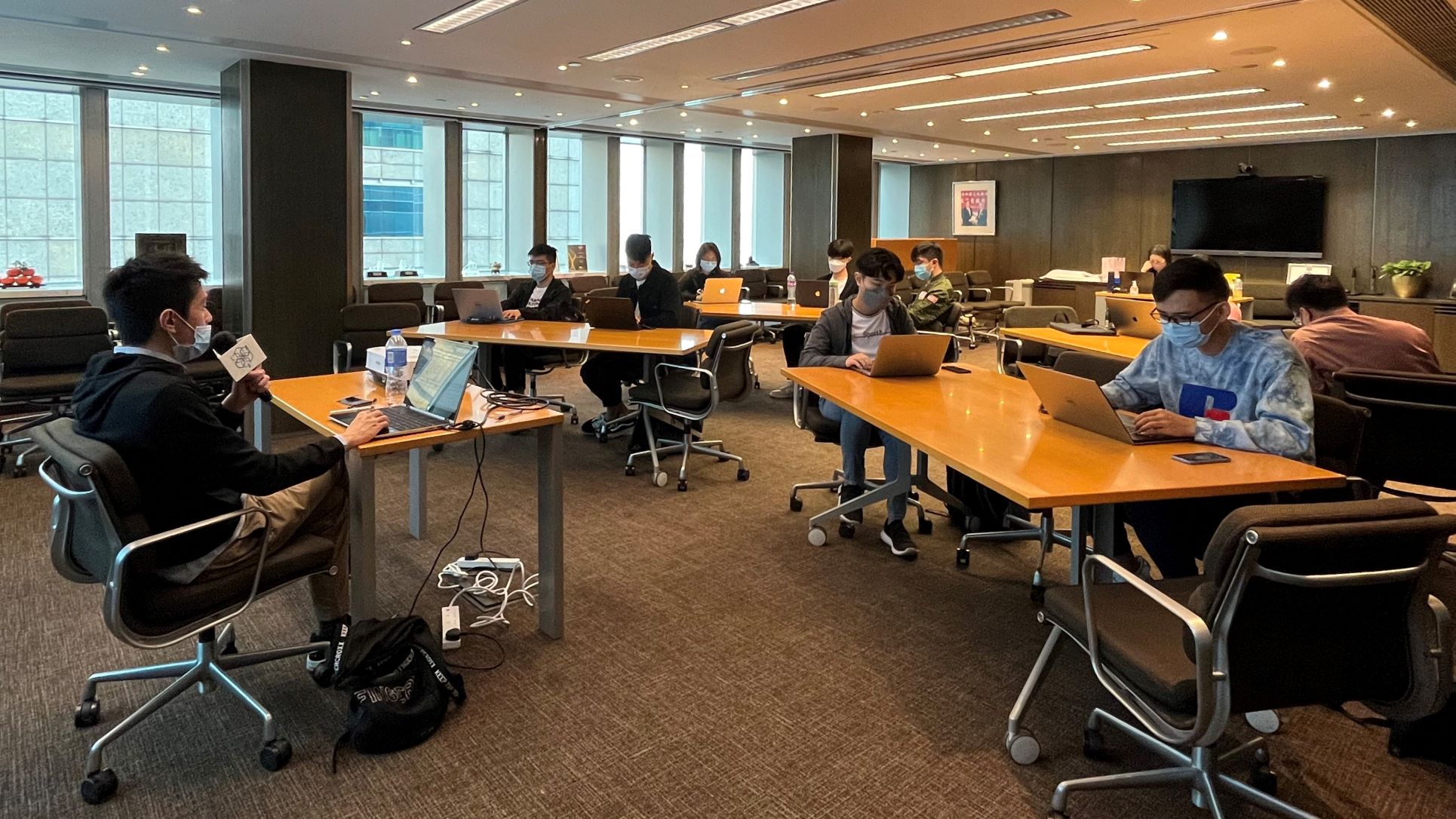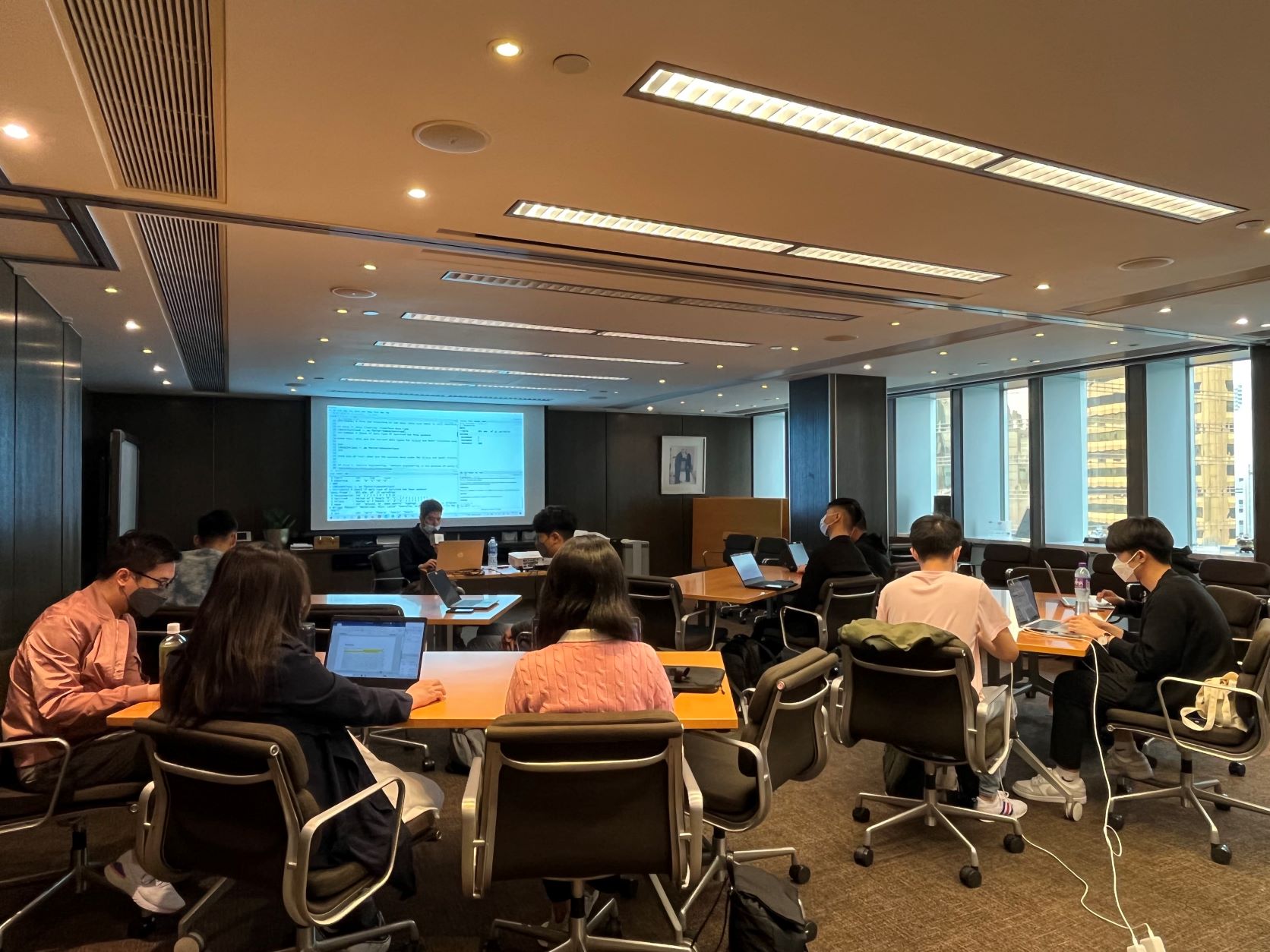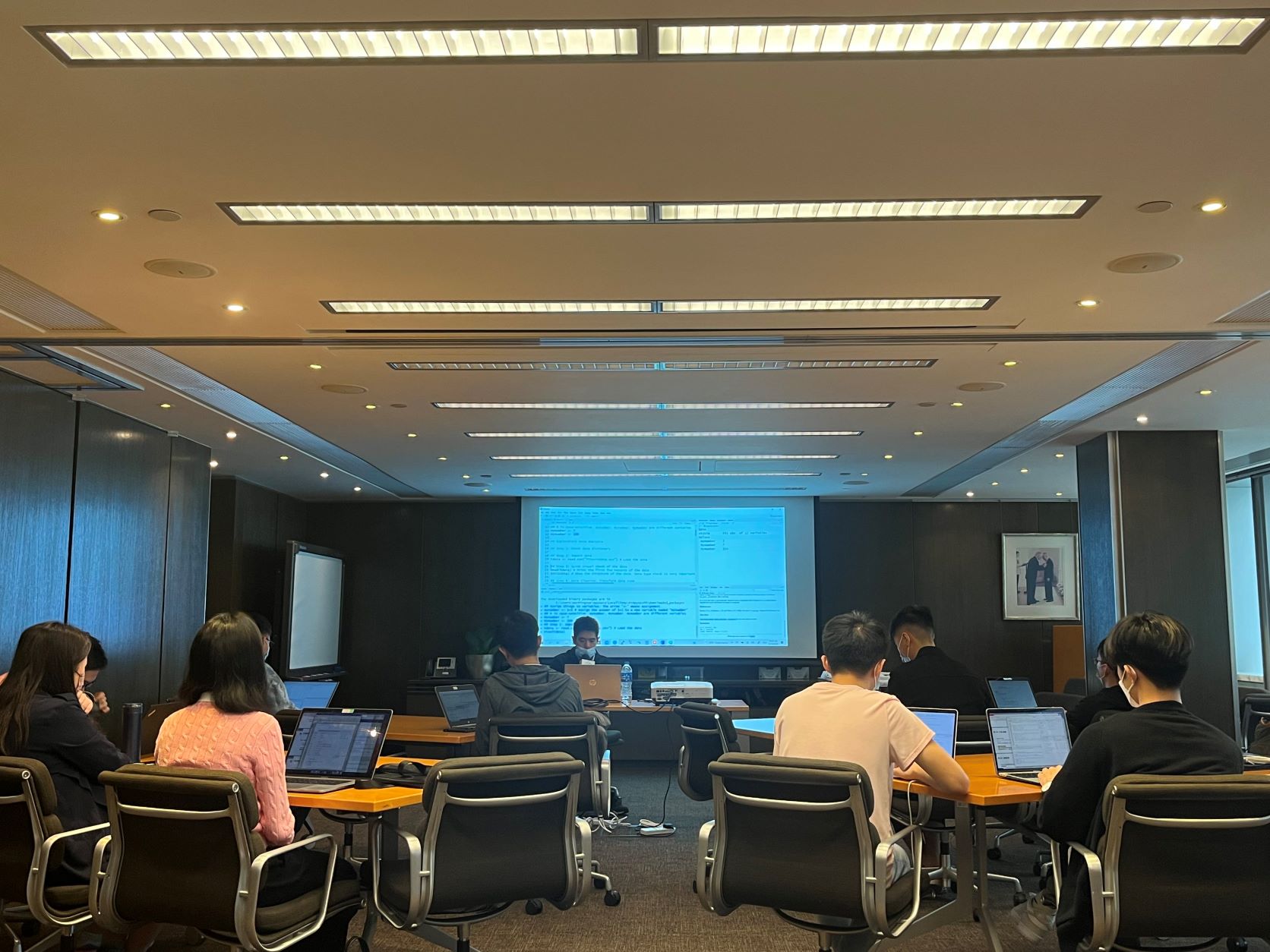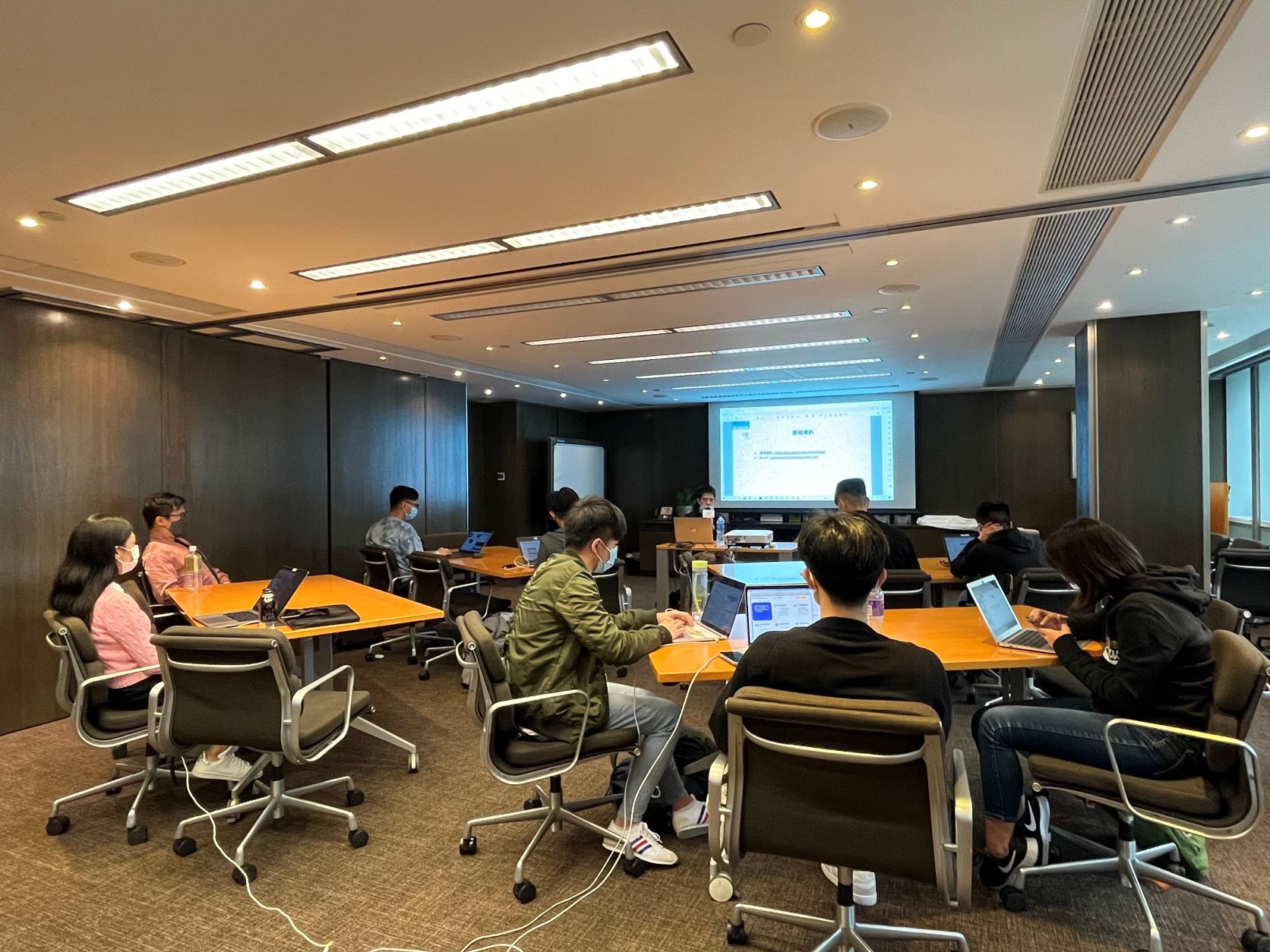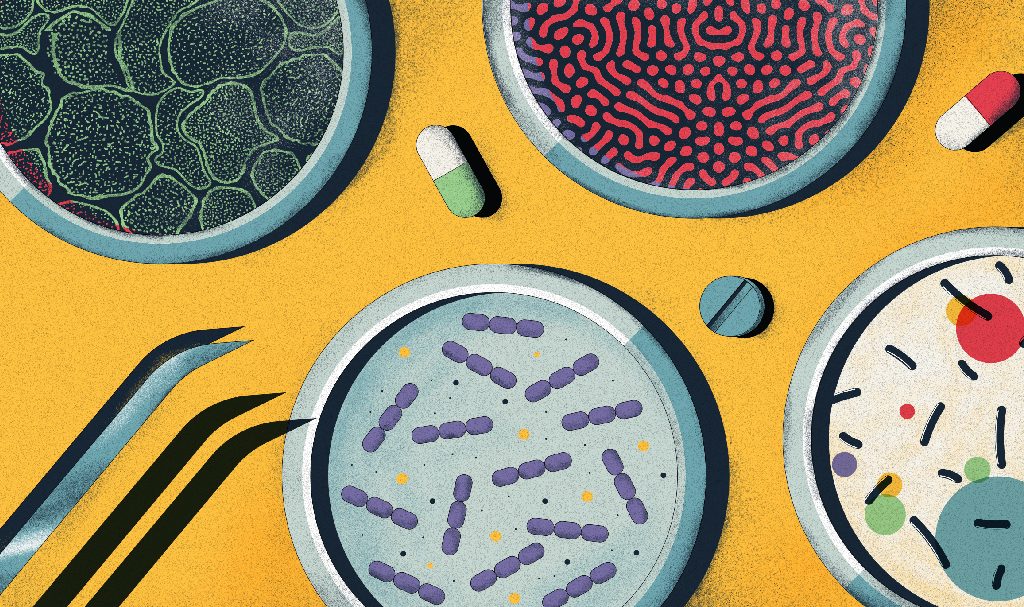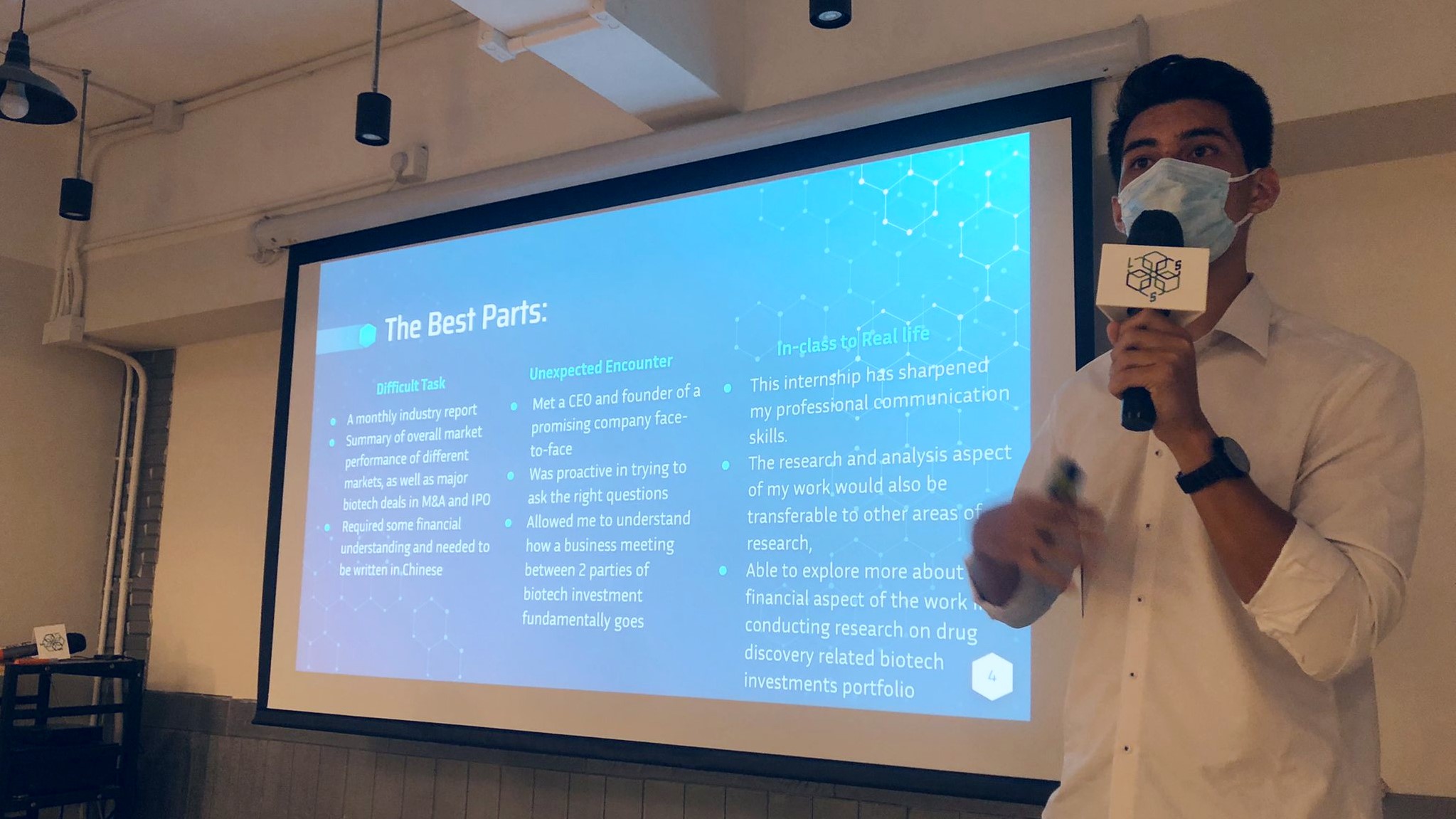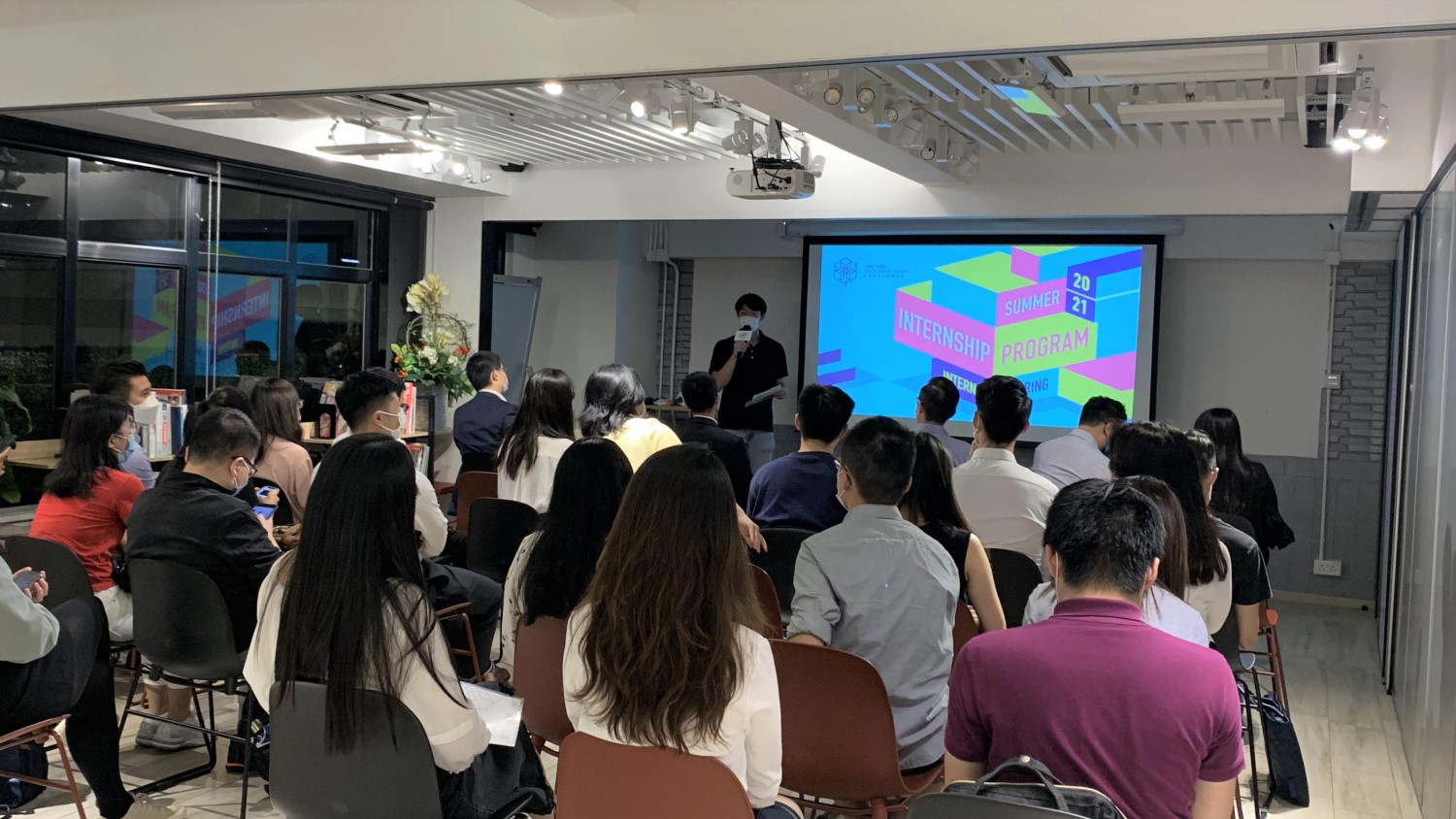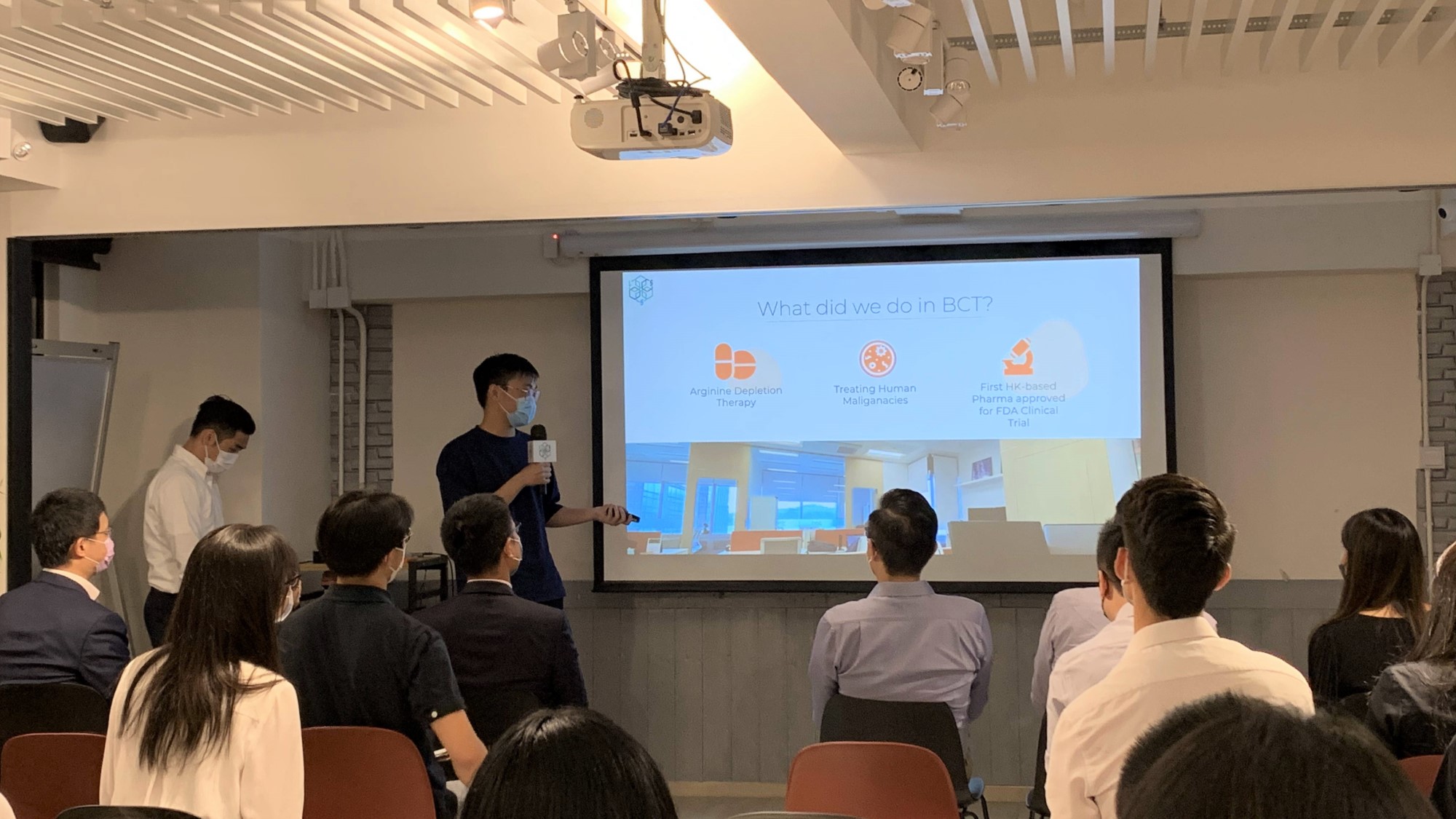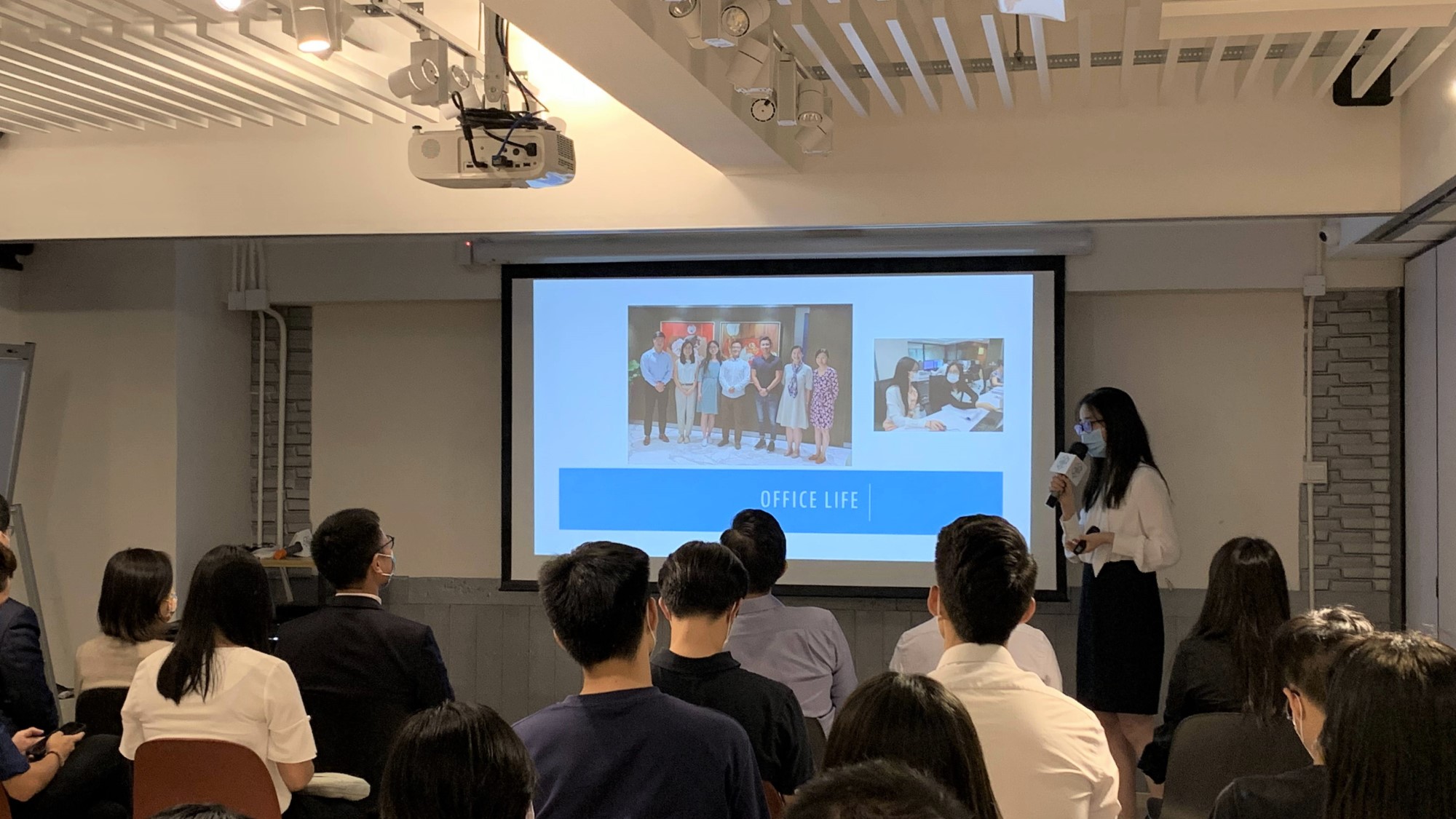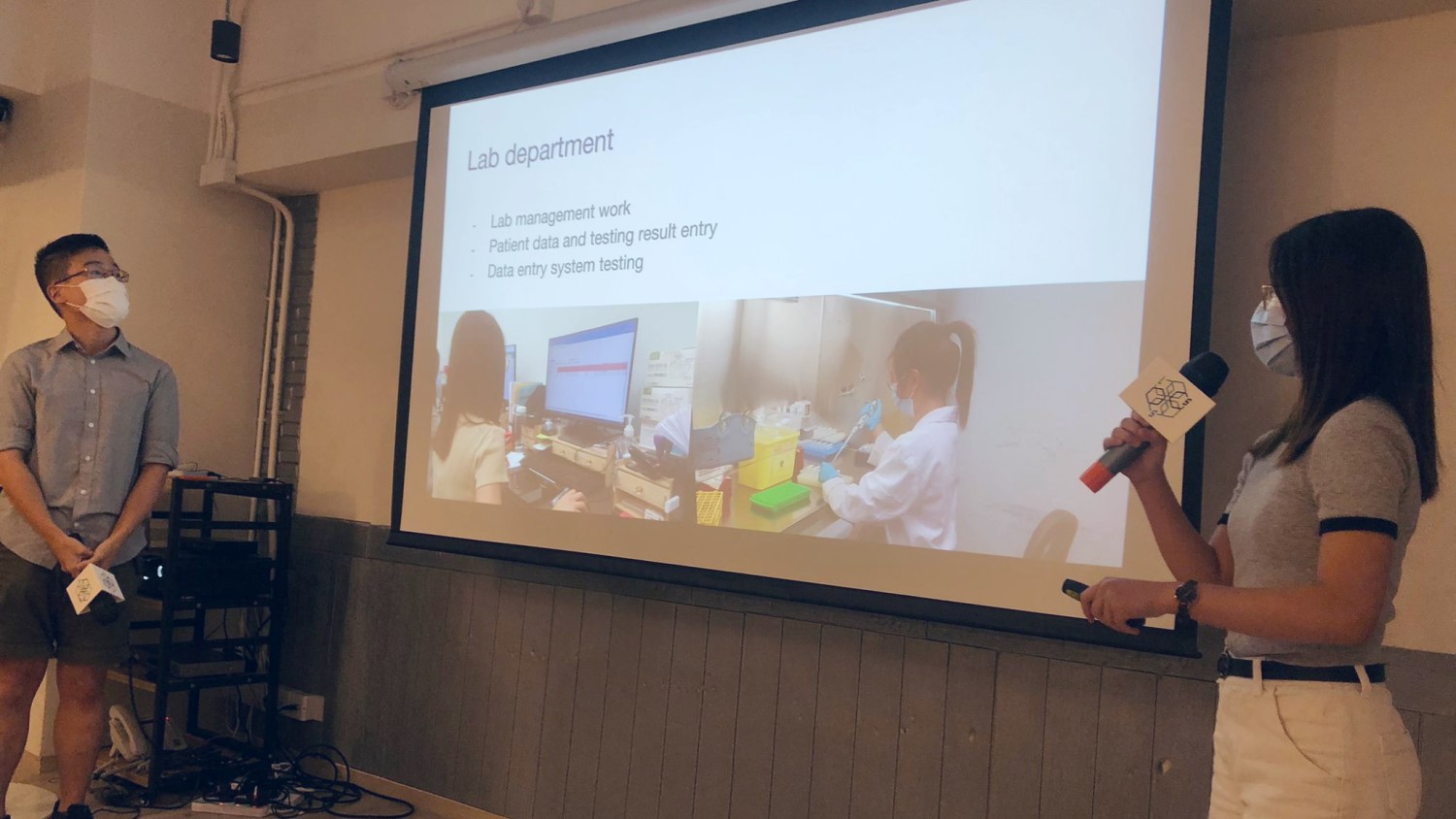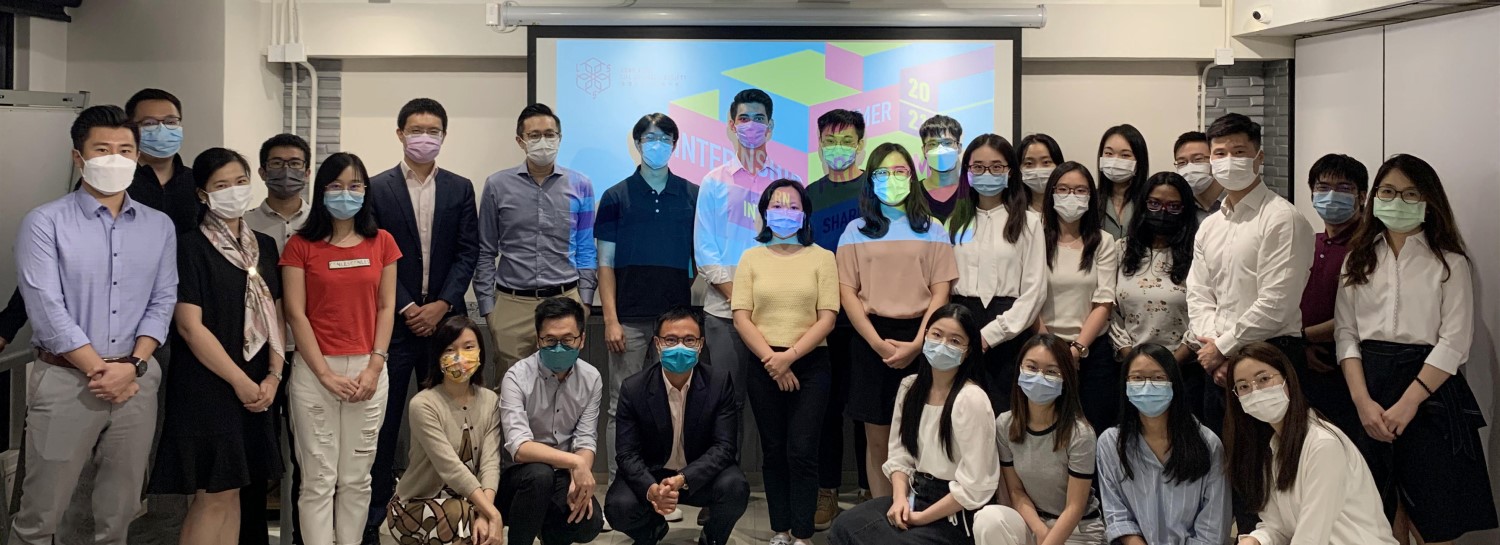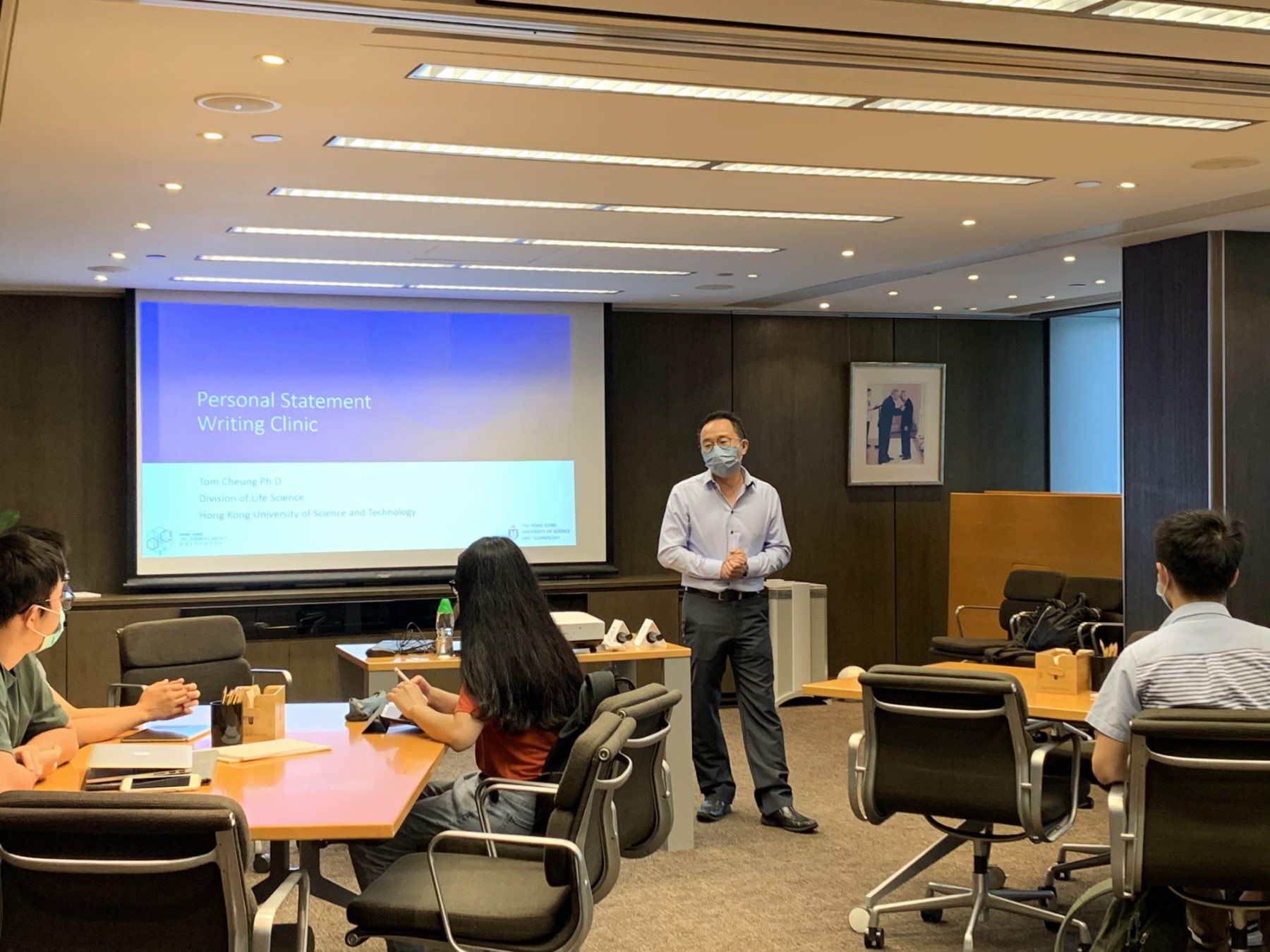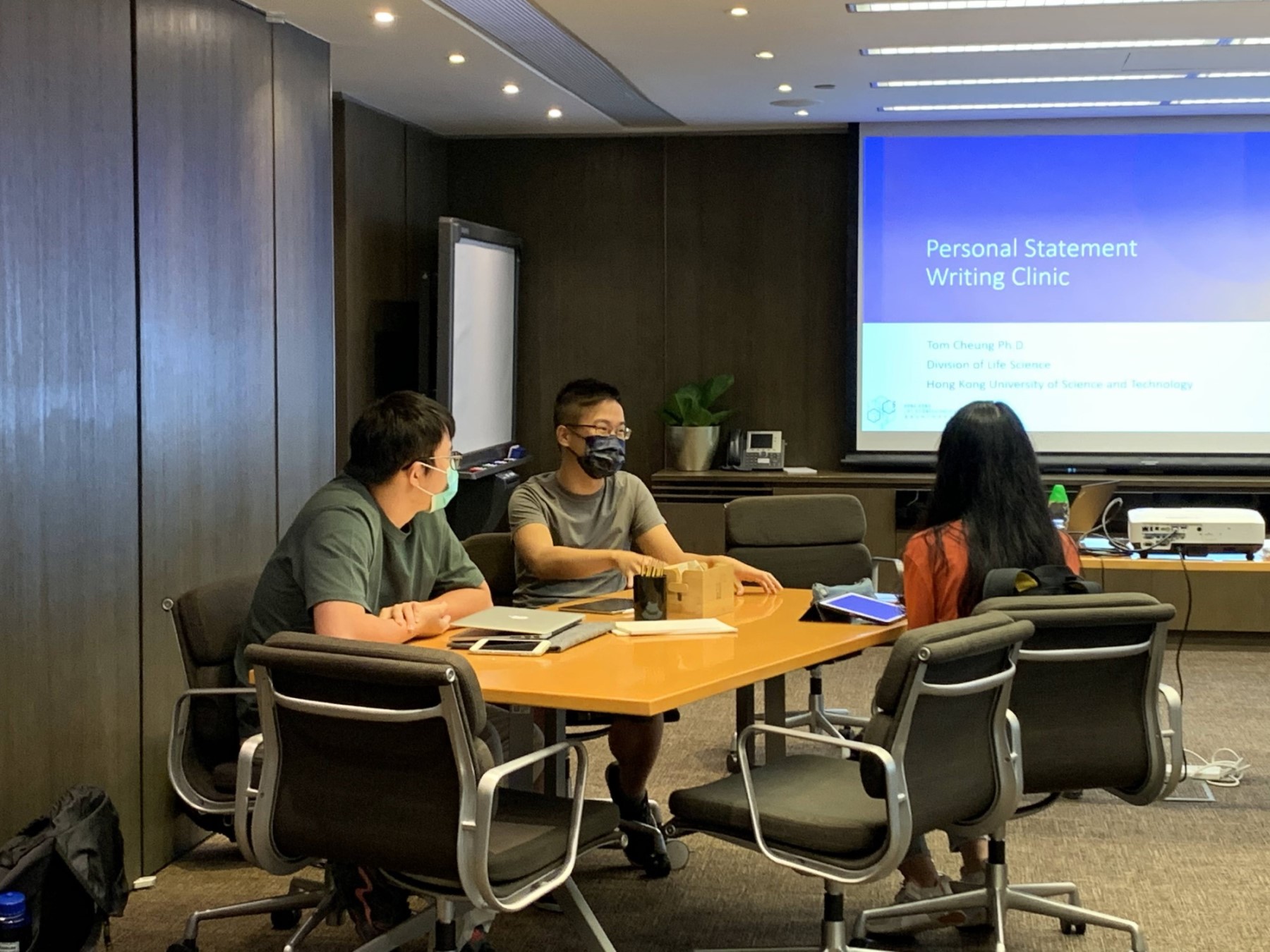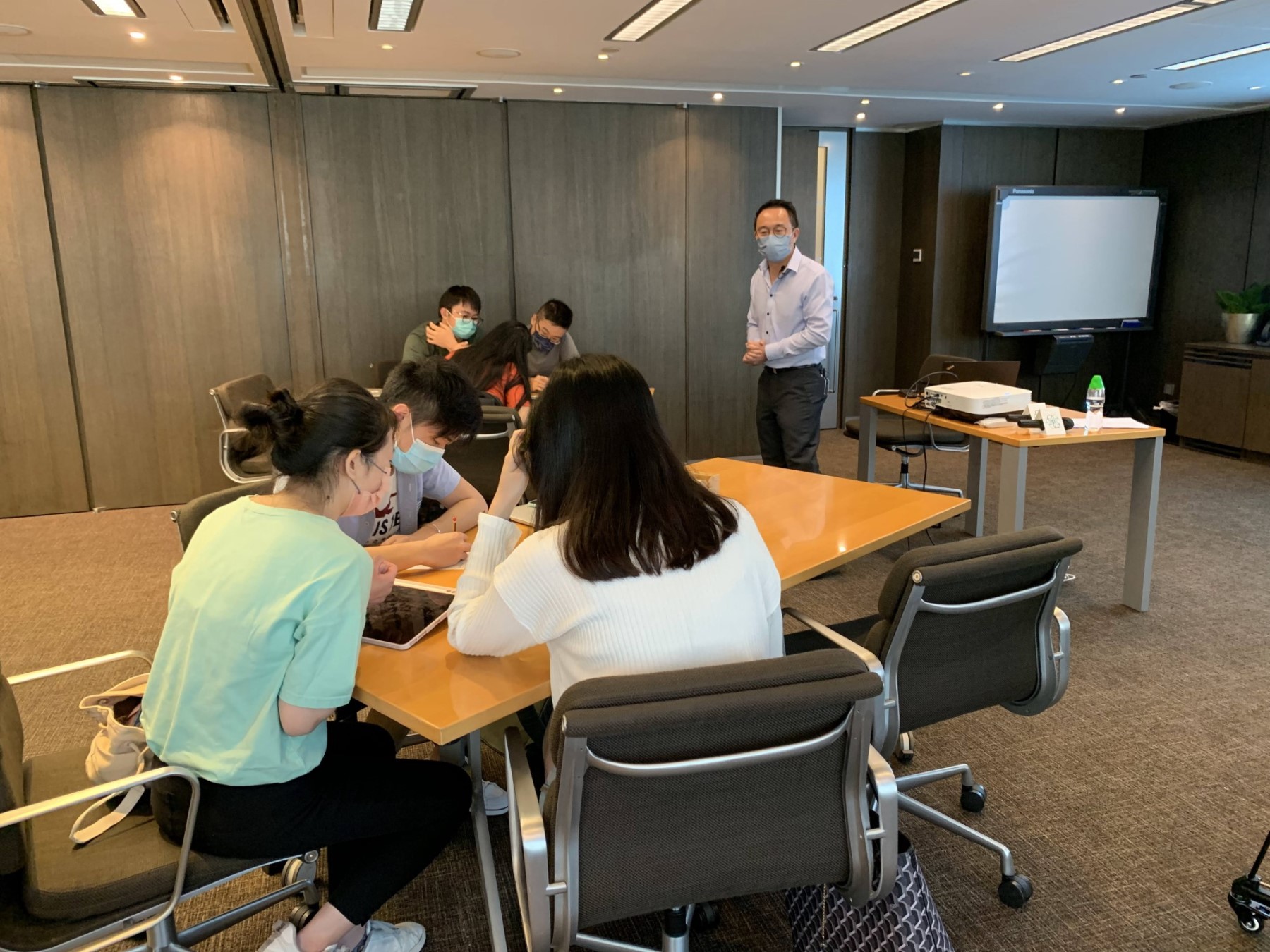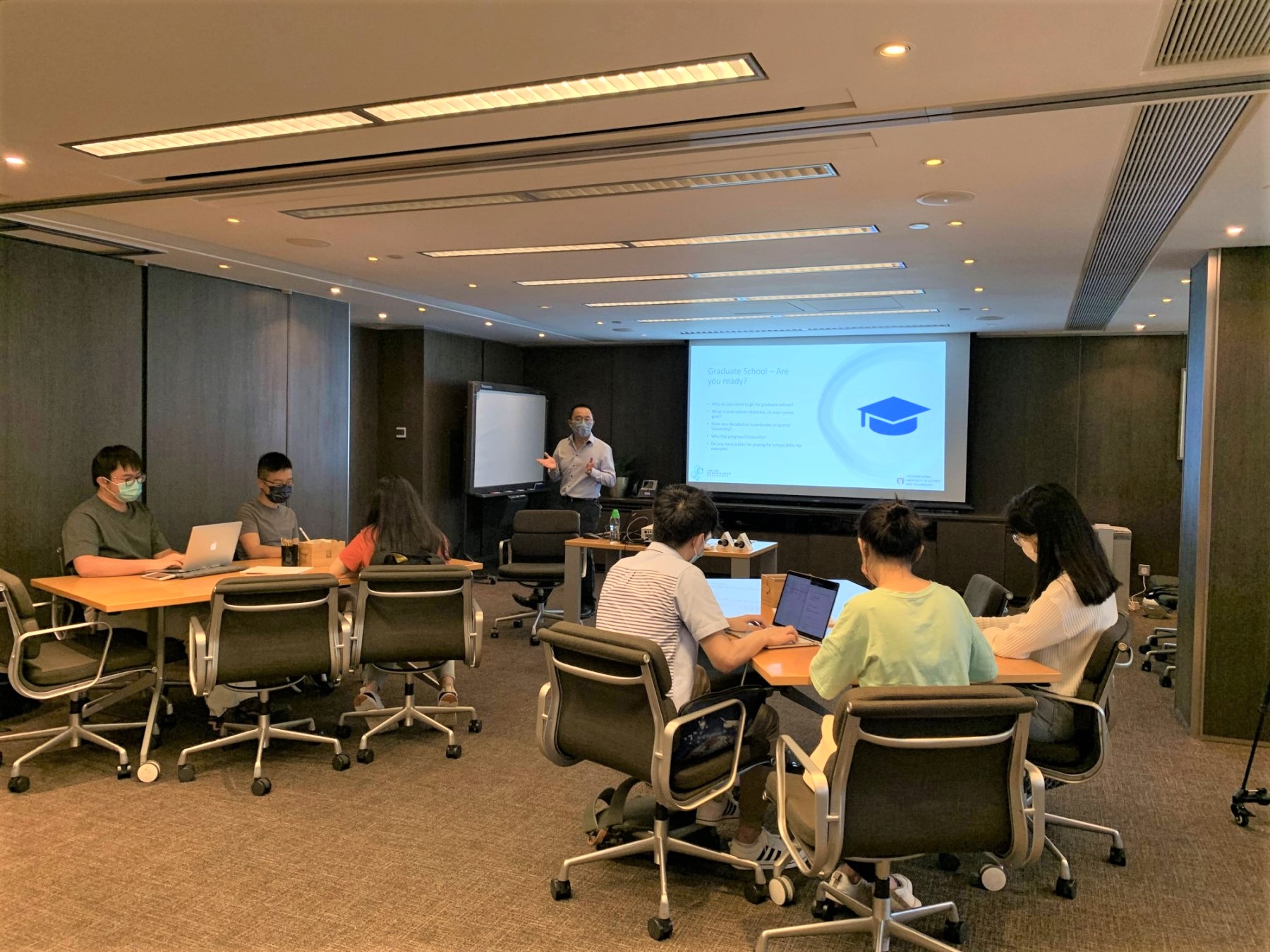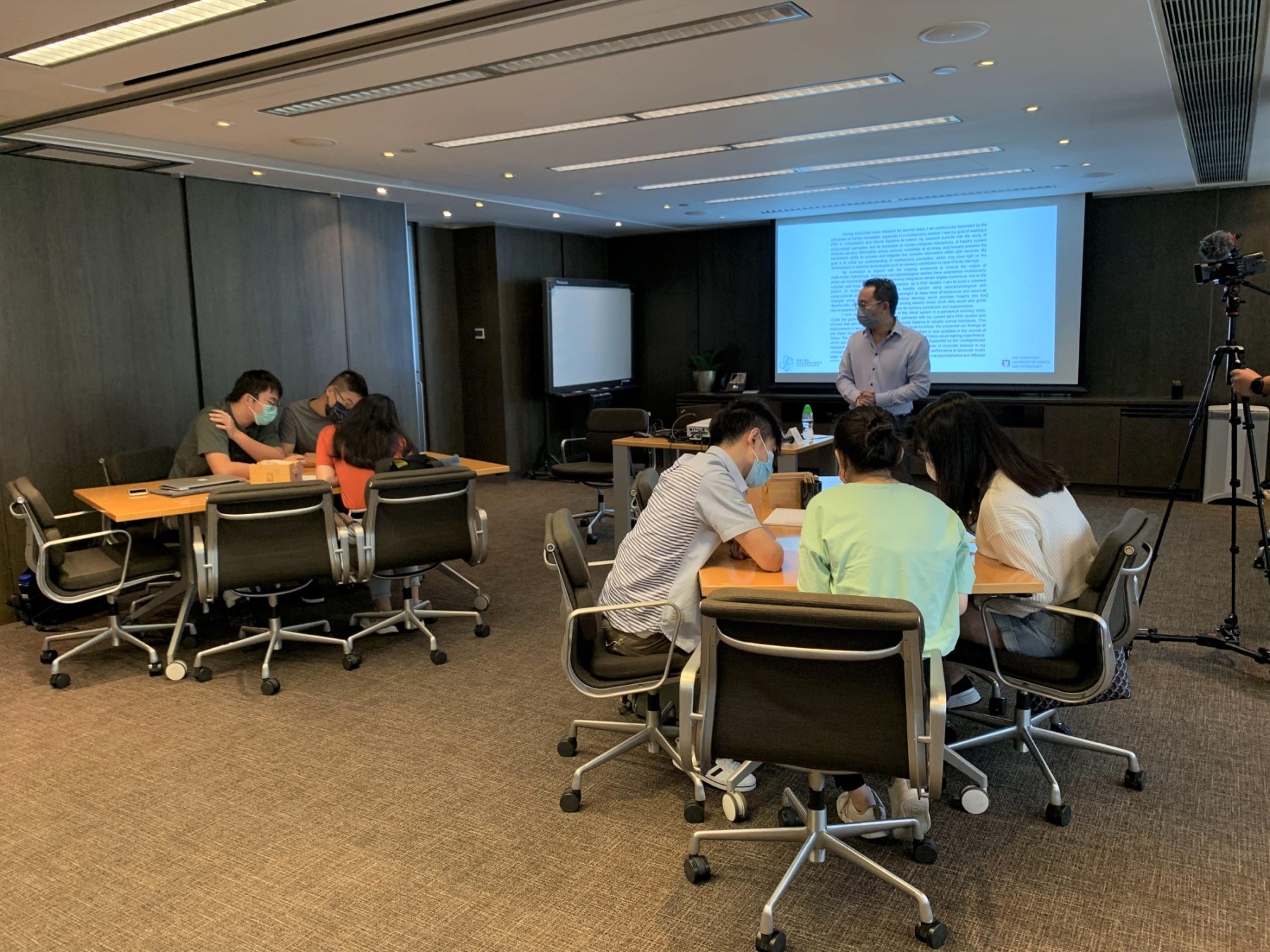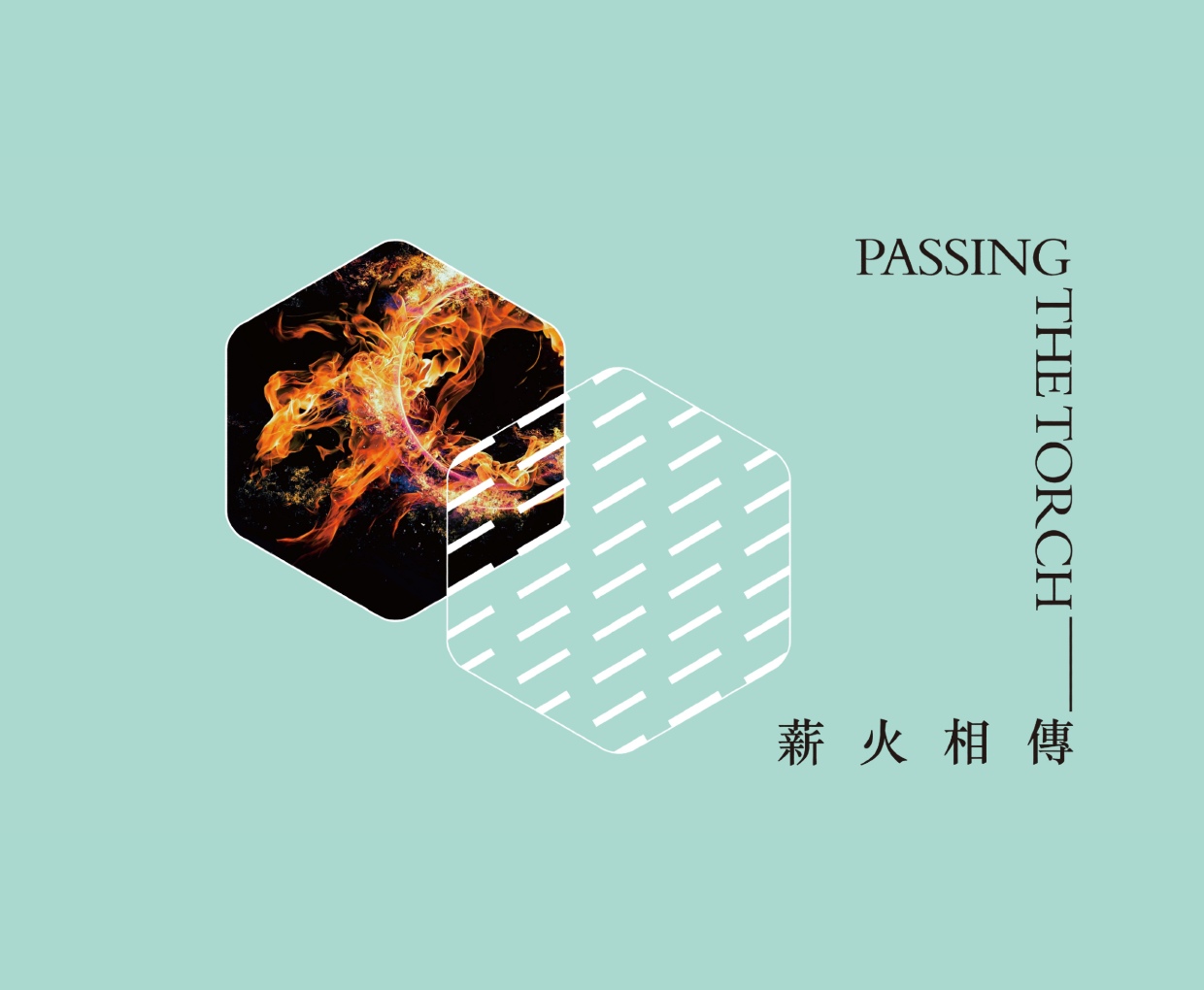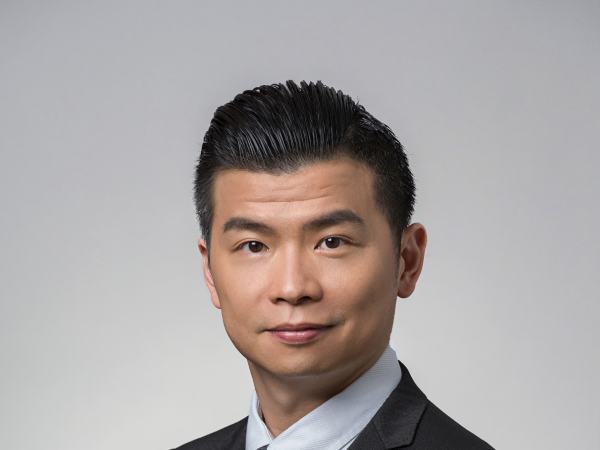The workshop on "Data Science Fundamentals" was successfully held on 23 October 2021. Mr Warrington Hsu, a data science consultant, introduced basic programming knowledge and technical data analytic skills to our members. In the event, members were able to get a taste of R, a popular programming language for statistical and data analysis.
AsianScientist – Asia is probably the most exciting region in the world for the biomedical sciences today. It offers a range of income levels, ethnicities, occupations, traditions, operating conditions and regulatory environments not found anywhere else. These are the result of a confluence of economic, social and technological forces.
Consider first the growing importance of Asia as a market for (Western) Big Pharma, a shift that has occurred in tandem with the region’s broader economic rise. This has prompted greater infusions of capital, talent and biomedical knowhow into the region. Big Pharma now recognizes the lucrative opportunity—alongside the obvious moral imperative—associated with developing drugs specifically for non-Western consumers.
Asian biomedical firms have evolved in this competitive environment, shifting rapidly up the value chain from performing outsourced research and manufacturing generic drugs to innovating at the leading edge of the field. Kiran Mazumdar-Shaw, chairperson and managing director of Biocon, says that in India for a long time, clinical practice was prioritized over clinical research because of the sheer volume of patients. Yet today she observes more widespread efforts to build up the differentiated datasets that are crucial to the research ecosystem.
“I’ve seen the big shift from imitative to original research, which is very important for any research-led kind of economy.”
Asia’s emergence as a biomedical research powerhouse also reflects the importance of (Internet-powered) global innovation networks, which allow Asia-based researchers to remain abreast of global currents in a way not possible in the past.
Shinya Yamanaka, who jointly won the 2012 Nobel Prize for Physiology or Medicine for the discovery that mature cells can be converted to behave like stem cells, stresses the importance of maintaining ties to the US, the “center of science.” Yamanaka’s work holds great promise for cell-based therapy and biomedical research, among other things.
Heightened government interest in science and technology, and the attendant increase in research funding, has also been a boon for biomedical scientists such as Dennis Lo, a chemical pathologist whose discoveries birthed the non-invasive prenatal testing (NIPT) industry.
Lo returned from the UK to his native Hong Kong in 1997. He discovered that he could extract a reliable and sufficient amount of fetal DNA from maternal plasma and serum. Lo’s NIPT portfolio, assigned to the Chinese University of Hong Kong, was subsequently sub-licensed to firms such as Sequenom and Illumina.
Asia’s more general enthusiasm for new technologies also suggests that biomedical sciences will quickly benefit from emerging ones like 3D printing, artificial intelligence (AI) and blockchain. Blockchain, for instance, has the potential to heighten collaboration between actors in sprawling research and innovation networks by allowing them to safely share digital assets.
AI is already being harnessed to accelerate drug discovery—particularly relevant in an era of personalized medicine—as well as in diagnostics. China’s Tencent has deployed its AI Medical Innovation System (AIMIS) in over ten hospitals around the country. AIMIS has demonstrated accuracy rates of over 90 percent for preliminary diagnoses of esophageal cancer, 95 percent for lung sarcoidosis and 97 percent for diabetic retinopathy.
Even as Asian biomedical scientists are gazing into the future, they are also reaching back into the region’s past—to assess how traditional medical practices and knowledge banks might be applied to modern medicine.
The textbook example is Tu Youyou’s discovery of artemisinin in 1972 through the use of fourth century Chinese texts, which eventually led to her jointly winning the 2015 Nobel Prize for Physiology or Medicine. A more recent one is PHY906, a four-herb Chinese formula from a 1,800-year-old recipe that has been shown to alleviate chemotherapy’s side effects while enhancing its anti-tumor activities.
For further insights into the state of science in Asia in areas ranging from agriculture to physics, download the Five Years Of The Asian Scientist 100 white paper here.
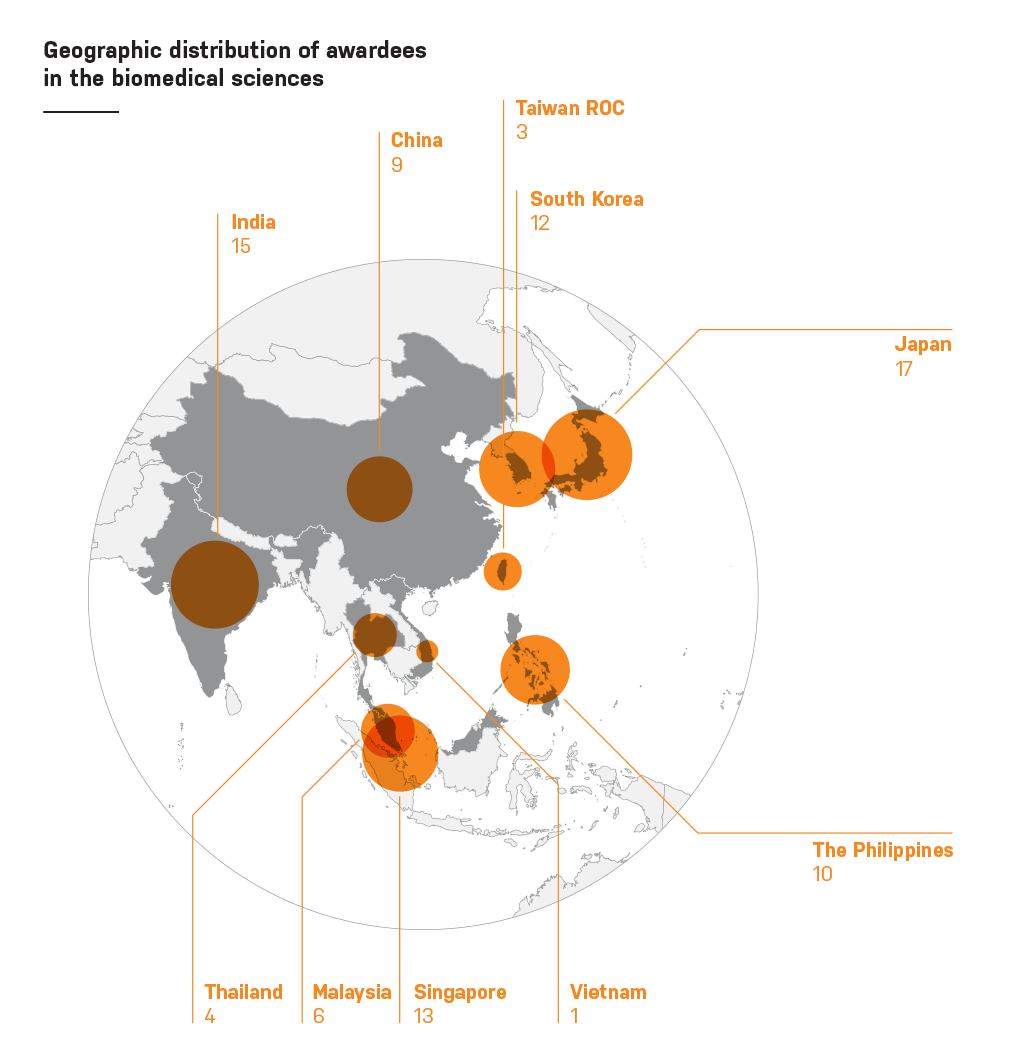
-----
Copyright: Asian Scientist Magazine; Illustration: Oi Keat Lam/Asian Scientist Magazine.
Disclaimer: This article does not necessarily reflect the views of AsianScientist or its staff.
The Intern Sharing of the Summer Internship Program was held on 4 October 2021. 10 groups of interns shared their experience and takeaways during the session.
Learn more about HKLSS Life Sciences Summer Internship Program
AsianScientist – By all accounts, S* was lucky—his COVID-19 symptoms were unremarkably mild. Besides feeling a little tired and out of breath, he did not require any treatment during his mandated 14-day hospital stay. But just a day after being discharged, he noticed something odd: a light workout left him uncharacteristically exhausted.
“I was flat out,” he said. “I couldn’t get out of bed after that.”
The 35-year-old from Malaysia, who used to weight train five times a week, says he had never felt like this before his COVID-19 diagnosis. Even weeks after his official ‘recovery,’ he still finds it hard to get through a full day of work or a short workout session without needing a nap or a cup of coffee.
COVID-19 has a fairly low case-fatality ratio, with 2.4 percent of confirmed patients passing away. But for the majority fortunate enough to survive their bout with the virus, it’s becoming evident that recovery is not necessarily the end of the journey. S*’s experience is a textbook example of something a significant minority of COVID-19 survivors are also facing: the curious phenomenon of symptoms persisting weeks to months after recovery.
The riddled road to recovery
Currently, the World Health Organization (WHO) recommends a time-based criteria for recovery: patients free from fever and respiratory symptoms are considered as recovered ten days from the onset of their illness.
A little over six months into the pandemic, disturbing anecdotes from COVID-19 survivors began to come to light. Even long after they had supposedly recovered, some individuals still suffered from a recurring array of symptoms, including muscle aches, breathlessness, heart palpitations, gastrointestinal disturbances and cognitive disturbances like an inability to concentrate. Across the board, the survivors were consumed by an overwhelming feeling of fatigue.
Still lacking an official name, this phenomenon of persistent COVID-19 symptoms is most frequently termed ‘long-haul COVID-19’ or simply ‘long COVID.’ According to Dr. Nisreen Alwan, an associate professor of public health from the University of Southampton—a COVID long-hauler herself—it may be difficult to investigate the condition’s true prevalence.
Considering that there are over 50 million confirmed recovered cases of COVID-19 worldwide, and many more potentially undiagnosed, at least five million people may be struggling with long COVID. And because the virus is so new, there is little knowledge on what makes one person more likely to develop long COVID—much less how to treat it or how long it lasts.
Currently, data from over four million people on the COVID Symptom Study smartphone app suggests that over 10 percent still have problems a month after recovery, and around one in 50 are still suffering after three months. But as countries seek to boost struggling economies by reopening more industries, COVID long haulers may find it difficult to keep up with the demands of work on top of their own physical battles.

Paying the physical and psychological price
Until now, there is no definitive answer as to why long COVID persists, though researchers have posited a few possibilities. First, COVID-19 infection has been shown to leave behind lung scarring, which could explain the shortness of breath reported by some recovered patients.
Researchers have also noticed that the symptoms of aches and exhaustion resemble that of post-viral fatigue syndrome. Thought to be caused by the production of inflammatory molecules called cytokines by the immune system, this condition can follow any viral infection, even influenza.
While post-viral fatigue is fairly common and short lived, there seems to be something more insidious at play with the COVID long-haulers. The exhaustion that follows any slight physical or mental exertion, as experienced by S*, is characteristic of another condition known as myalgic encephalomyelitis (ME) or chronic fatigue syndrome (CFS). A veritable medical mystery, ME/CFS is a complex and debilitating condition that has no confirmed cause or treatment.
With long COVID, the symptoms could also go beyond the physical. In a long-term study of 233 severe acute respiratory syndrome (SARS) survivors in Hong Kong published in 2009, researchers found that 40.3 percent of participants had reported a chronic fatigue problem, with 27.1 percent meeting the criteria for chronic fatigue syndrome more than three years after infection. At the same time, over 40 percent of the respondents had active psychiatric illnesses, highlighting the psychological price of SARS infection.
For the researchers, these numbers were alarming—and with good reason. Their data showed that psychiatric disorders and fatigue-related conditions in SARS survivors increased after their recovery, regardless of case severity. These post-infection complications were likely to be found among healthcare workers and unemployed individuals, as well as in those who believed in perceived social stigma and needed help from the SARS survivors’ fund.
“SARS patients had long-term respiratory and orthopedic complications that significantly affected their mental health,” study researcher Dr. Marco Lam Ho Bun from the Chinese University of Hong Kong’s department of psychiatry told Asian Scientist Magazine.
Despite this, Lam added that he had not observed as many psychiatric referrals with COVID-19 patients in Hong Kong, possibly due to the differences in severity and treatments between SARS and COVID-19. However, many long-COVID survivors continue to report feelings of frustration and anxiety over their symptoms and a need for emotional support.
Fighting for recognition
For a long time, there was little support for or information about long COVID. Left to make sense of their conditions on their own, the long-haulers organized their own support groups to share their experiences and in the case of one British group, to campaign for recognition. Healthcare professionals like Alwan who have contracted COVID themselves also took matters into their own hands, publishing a manifesto for tackling long COVID.
Thankfully, their efforts have paid off. Healthcare systems are now beginning to recognize the need to address long COVID. For example, the National Health Service (NHS) in the UK has launched an online platform and specialist centers to support and treat patients living with long COVID. Researchers in the UK have also started an observational study following 10,000 COVID-19 survivors for up to 25 years to understand the disease’s long-term effects. Dr. Rafeeq Ruslan, a Malaysian doctor working for the NHS, has seen the benefits of such support and would like to see similar measures taken in Asia.
“I have not read any observational studies regarding the prevalence of long COVID in Asia, but there is growing evidence that long COVID is a distinct condition that could potentially affect 10–20 percent of the population,” he said.
With almost 13 million confirmed recoveries in Asia, there could be at least a million survivors facing long COVID in the region.
“Currently much more attention is paid to public health measures and management of COVID-19 in hospital settings, but consideration should also be placed on treating long COVID with clear management strategies, new clinical guidance and local protocols backed by evidence-based research,” said Ruslan.
Indeed, in an eerily prescient move, Lam and his collaborators concluded their 2009 study of SARS survivors with a warning that the world needed to be better prepared for the next global pandemic and its potential psychological toll.
Mental health services, they wrote, should be available to patients, healthcare workers, and the general public not only during the peak of an infectious outbreak, but also during its aftermath. While these systems and services may not have been in place at the onset of COVID-19, perhaps the pandemic’s harsh memory will finally persuade governments around the world to heed the words of Lam and his team.
The cost of long COVID
Though little is known of its long-term impacts, it is easy to imagine that the debilitating yet largely invisible physical and cognitive impairments of long COVID could result in productivity losses and workplace disruptions. For instance, Lam’s study found that the psychiatric complications that followed SARS infection impaired their ability to work and hold permanent employment.
And for individuals enduring these symptoms on top of the uncertainty of their conditions, the cost is far more personal.
“Right now, I can’t get through a full day of work or play with my daughter without feeling exhausted,” said S*. “Nobody knows how long this will last for. What if it never goes away?” For now, only time will tell. While science has come a long way in unlocking the secrets of COVID-19, there are still many things we don’t understand. With the number of COVID-19 infections rising across the globe—even with the ongoing vaccine rollout—long COVID is quickly becoming one of the most pressing mysteries that needs to be addressed.
This article was first published in the January 2021 print version of Asian Scientist Magazine.
———
Copyright: Asian Scientist Magazine.
Disclaimer: This article does not necessarily reflect the views of AsianScientist or its staff.
The "Personal Statement Writing Clinic" was held on 25 September 2021. Prof Tom Cheung shared tips and key components of writing a unique, concise and no-cliche statement. Participants was formed in small groups to discuss the examples and share together the challenges they encountered when preparing a personal statement.
The Mentorship Scheme 2022 is now open for application until 19 November 2021. Two information sessions will be held on 12 and 13 October 2021. For more information and online application, please visit:
COVID-19 is continuing to spread, with 186 million confirmed cases and more than four million deaths around the world, according to WHO statistics by 13 July 2021. Although more than 3.1 billion doses of vaccine have been administrated globally, the mutation of the virus and diverse prevention measures among different countries result in a rising number of cases. It is still too early to predict when the pandemic will end.
At the frontier of the fight against the pandemic, biomedical sciences and healthcare sectors are playing an important role in combating the coronavirus. Funds flowing into healthcare industries have increased significantly during the pandemic. We believe that with the joint efforts of governments, healthcare organizations and individuals around the world, the pandemic will eventually be brought under control. What will be the changes and new trends in investing the healthcare sector after the pandemic era in Hong Kong and the World?
Drivers for future development of the healthcare industry
Before the pandemic, the driving factors for the development of healthcare industry included:
1) increasing healthcare needs driven by the ever-growing global population, accelerated aging of major developed and some developing countries, and the rising prevalence of chronic diseases;
2) the continuous advances of life sciences and biotechnology, emerging innovation of clinical technology, coupled with improved healthcare awareness among healthcare / biomedical sciences professionals and patients, which would further help the expansion of this sector.
After the hit of the COVID-19, new changes have been noticed. First of all, COVID-19 pandemic has been a big catalyst in the rapid adoption of digital health tools by healthcare service systems all over the world. Secondly, some sub-segments benefited from the pandemic, for example, in vitro diagnostics (IVD) industry boomed. The vaccine R&D and public health have seen a particular surge in interest. Additionally, the pandemic also enhanced public health awareness and valued dietary supplements.
Rising investment in healthcare
According to a report by CB Insights earlier this year, with the impact of the pandemic, global healthcare funding reached a new high in 2020, which was a total of $80.6 billion equity funding across more than 5,500 deals.
Data source: CB Insights
Another report from ChinaBio showed that China’s venture capital (VC) or private equity (PE) funds raised $56.1 billion in 2020 targeting healthcare industry, also hit a record high.
Data source: ChinaBio
Another report from ChinaBio showed that China’s venture capital (VC) or private equity (PE) funds raised $56.1 billion in 2020 targeting healthcare industry, also hit a record high.
Data source: ChinaBio
There was an impressive record of China healthcare IPOs in 2020. Around 80 IPOs in the healthcare sector completed in 2020, grew by 77% comparing to 2019. These companies are listed on China A-shares, Hong Kong Stock Exchanges and Nasdaq.
The pandemic is a catalyst for investment in life science, biotechnology and healthcare sectors, as the pandemic has exposed pain points in the industry, including the shortage of effective tele-medicine and the insufficiency of preventive medicine products.
Trending healthcare topics in the post-COVID era
According to the CB Insights report, digital health has gained significant funding due to the impact of COVID. The global fund injected into digital health has increased by 45%. The equity investment in digital health has reached a record high of $26.5 billion, which is one-third of all healthcare investment. In addition, investment is also concentrated in the fields of gene editing, artificial intelligence, cell therapy, and vaccines.
In the post-COVID era, healthcare industry is full of opportunities. StartUs Insights studied 1,745 start-ups in the healthcare/pharma sectors around the world, and identified the top ten trends in this field after 2021. These will bring more solutions for health management, and disease prevention and treatment. They may become the next hotspots of future investment.
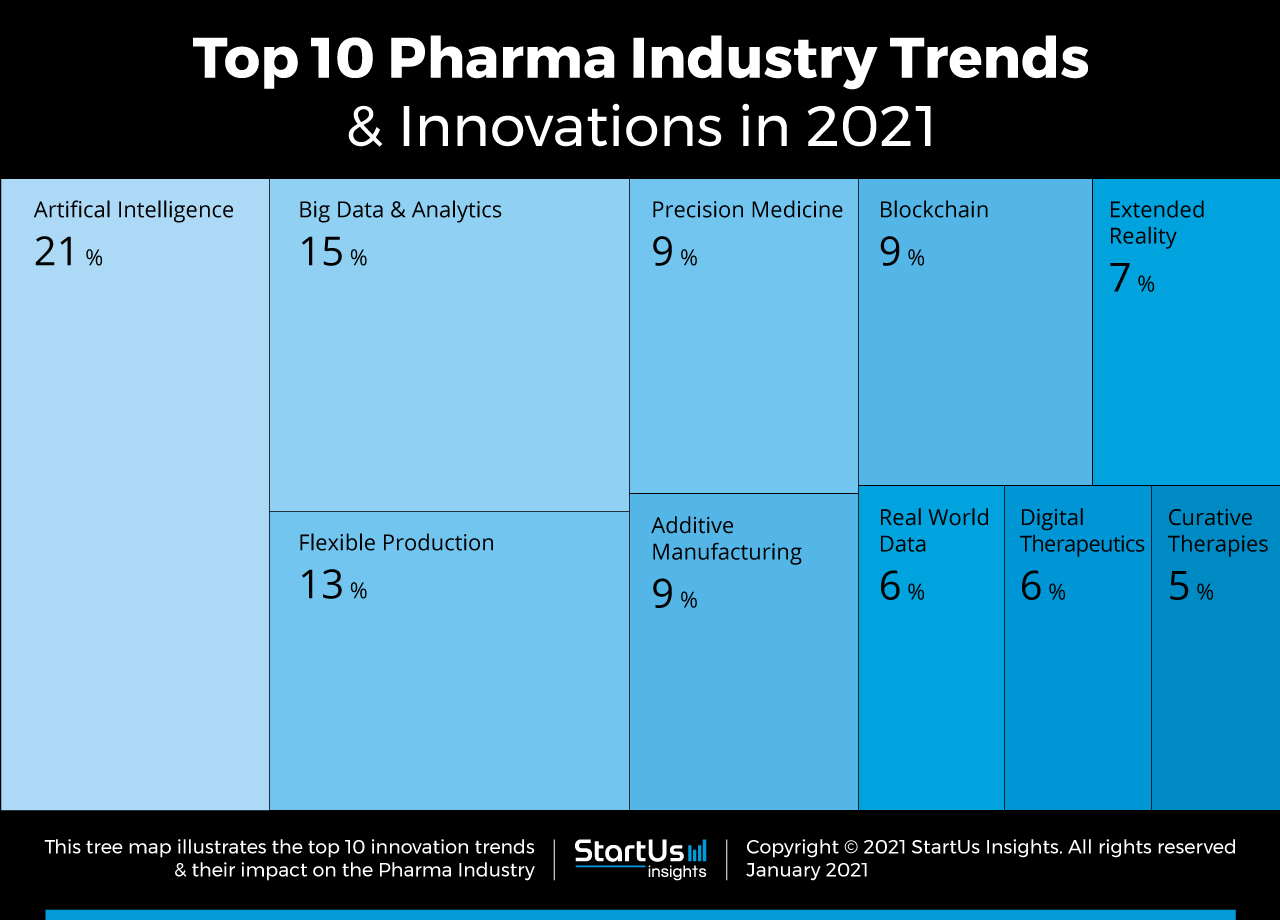
Data source:StartUs Insights
Top 10 Pharma Industry Trends
1. Artificial Intelligence (AI)
AI and machine learning are accelerating drug R&D. They are also being applied in the automation and process optimization of medical product manufacture, as well as the design for more effective marketing and post-marketing management strategies. For example, Pangaea Data uses AI algorithms to analyze medical records and clinical trial documents to help clinical trials identify suitable patients; InVivo AI is trying to use innovative AI algorithms to identify drug molecules structure to accelerate and optimize drug discovery process.
2. Big Data & Analytics
Massive medical data can be fully utilized in the era of big data. Pharma companies use big data to analyze the trend of unmet needs from the public to accurately allocate R&D resources. They also pinpoint adverse reactions related to a certain drug from the usage data of millions of patients, and obtain convincing predictions of side effects. Pharma companies can also optimize their logistics information platform to deliver new medicines to the market efficiently.
3. Flexible Production
Flexible production is an innovative manufacture model comparing to traditional industrialized mass production. It has flexible response capability, that is, small batch production capability. Its agile and precise response would well adapt to the ever-changing and personalized needs of consumers. In healthcare, new requirements on the manufacturing process arise in face of emerging personalized treatment needs. While customizing treatment products, the intelligent and digital flexible production lines will meet the needs of personalized treatments, and also improve manufacture efficiency and reduce energy consumption.
4. Precision Medicine
It is a well-known concept to customize prevention and treatment measures compatible with each patient's individual health status and disease conditions. For example, ExactCure simulates the pharmacokinetics of drugs in individual patients to predict the efficacy and drug interactions in different patients. Tepthera is committed to developing individualized therapeutic vaccines for cancer treatment.
5. Additive Manufacturing (3D Printing)
Additive manufacturing is applying 3D printing technology to healthcare industry, such as printing tissues or cells. 3D printing technology has great potential in drug development, organ engineering, and regenerative medicine. FabRx uses 3D printing technology to produce personalized prescriptions, such as sustained release tablets, or multidrug combination pills. Frontier Bio is developing 3D printed human tissues, which can be used to reconstruct blood vessels or nerve tissues.
6. Blockchain
Blockchain technology has extensive applications in the biomedical industry. Blockchain can be used in fields such as medical information security and privacy protection, and drug traceability. For example, PharmaTrace applies blockchain technology to strengthen the security of the information transaction process of pharmaceutical companies relying on the traceability and non-tampering features of blockchain technology; Veratrak provides blockchain solutions in data storage, protection, and workflow management in pharmaceutic supply chain.
7. Extended Reality (XR)
Extended reality is a mix of new technical concepts. X represents the extension (X) and also the unknown variables (X). It combines concepts of virtual reality (VR), augmented reality (AR), and mixed reality (MR). It integrates the virtual world and the real world, and has different presentations and applications in different industries. Nanome offers VR technology to display atoms, molecules and proteins to help researchers design druggable proteins and simulate 3D structures. Goodly Innovations has designed an AR system to assist in quality control and monitoring processes of pharma manufacture.
8. Real-world Data
Pharma real-world data includes patient health data, treatment data, and medical record, etc. The latest development in this field is related to the Internet of Things (IoT), which is extensive, convenient, and real-time collection of patient data via sensors and wearable devices. It can support drug development and generate real-world data feedback.
9. Digital Therapeutics
Digital therapeutics is also a new type of therapy, which generally refers to software products that have been proven by clinical trials to effectively prevent, manage, and treat certain medical disorders and diseases. Digital therapeutics has a significant value in treating behavior-mediated conditions that cannot be well solved with existing drug treatments (such as depression, post-traumatic stress disorder, smoking cessation, and insomnia). FDA approved Pear Therapeutics' reSET in September 2017, making it the first prescription digital therapy whileChina also approved its first digital therapy phone application in 2020, with integrated functions for cardiopulmonary, musculoskeletal and nutrition management, and combined services of wearable devices and pre-packed medical food.
10. Curative Therapies
This new type of therapy mainly refers to cell therapy and gene therapy that aims at curing and managing chronic diseases. For example, gene therapy can be used to repair gene deficiency to fundamentally cure a genetic disease. The technologies involved in gene therapy include adeno-associated virus (AAV) vector delivery technology, CRISPR gene editing technology, single/double base editing technology, and oncolytic virus gene modification technology.








